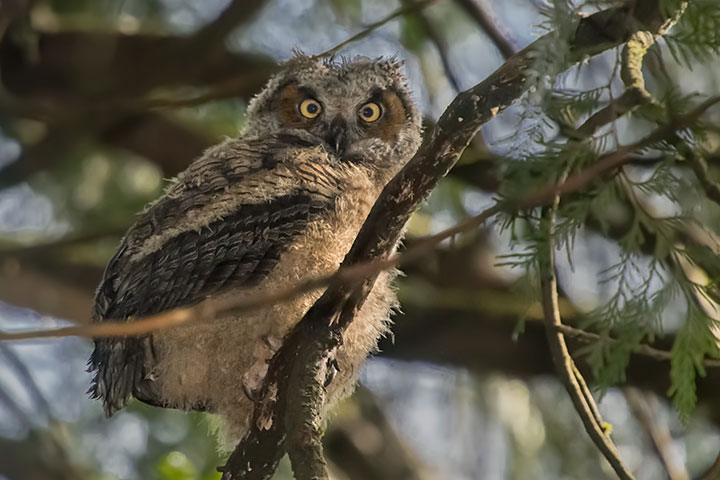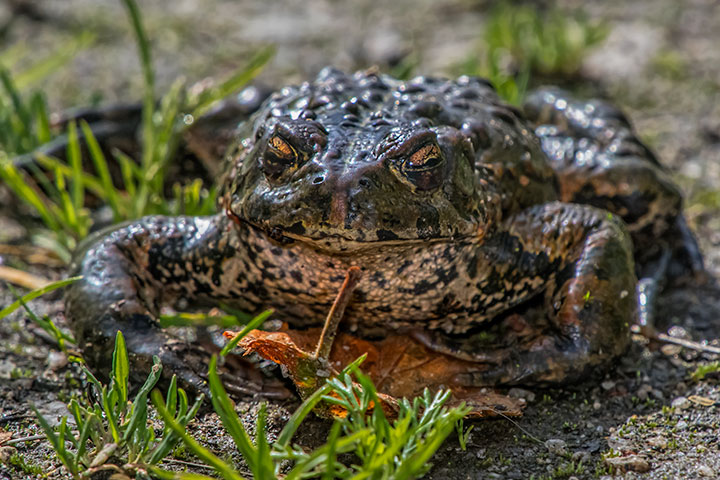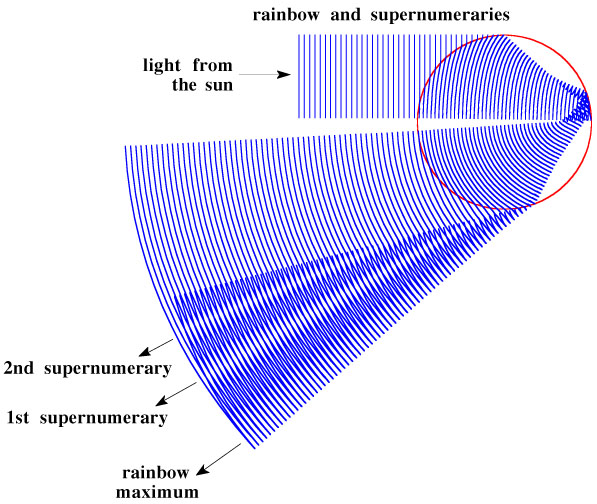Seen yesterday: a Great Horned Owl chick, a Western Toad, a double rainbow.
A recent posting showed a Great Horned Owl parent and one of its chicks. Here is the other.

Lest one be called a speciesist, we must recognize this Western Toad as one handsome fellow.

Things to notice in last evening’s double rainbow:
• the darkest region of the sky is between the two bows;
• red is on the outside of the primary bow, but the inside of the secondary bow;
• the colours are best near the horizon;
• the supernumerary bows (faint bows inside primary) are best near the top of the primary.
To view the full width of the picture, the cursor must be moved to various places across the frame. (A mobile device uses a tap.)
[photonav url=’http://blog.kootenay-lake.ca/wp-content/uploads/2017/06/rainbow170616s3.jpg’ container_height=480 container_width=695 mode=move position=right]

Yesterday I actually saw it ‘growing’ from the right to the left. I’ve never seen that before only the finished ‘product’. It was an awesome sight.
Birthe, yes fun to see. The spreading of the bow, whether uniform or from one side or the other depends upon how the shower moves along the valley.
Hi Alistair
If ever you feel up to it, I’d be curious to hear/read what you have to say about the formation of supernumerary bows. Or maybe you’ve covered that in an earlier post?
Trevor, I don’t recall having said much about them on the blog, but have said a little bit about them on the main kootenay-lake.ca website. See, Rainbows.
A slightly more detailed answer involves a bit of history. Descartes showed the position of the rainbow by tracing rays through a raindrop and discovering that two groups of rays overlapped to produce a bright region: the bow. However, observers complained that such an explanation could not account for the supernumerary bows. To understand these, one had to treat light, not as a ray, but as a wave. Indeed, it was the observation of the supernumerary bows that first prompted the ascendancy of the wave theory of light in the nineteenth century. If one repeats Descartes’ approach, but uses waves, a diagram such as below appears. Now, a moiré pattern illustrates the interference between the two portions of the wavefront that results in the appearance of the supernumerary bows.

Thanks much for this, Alistair. And also for the link to your wonder-full website, kootenay-lake.ca , which I expect to visit often as time allows.